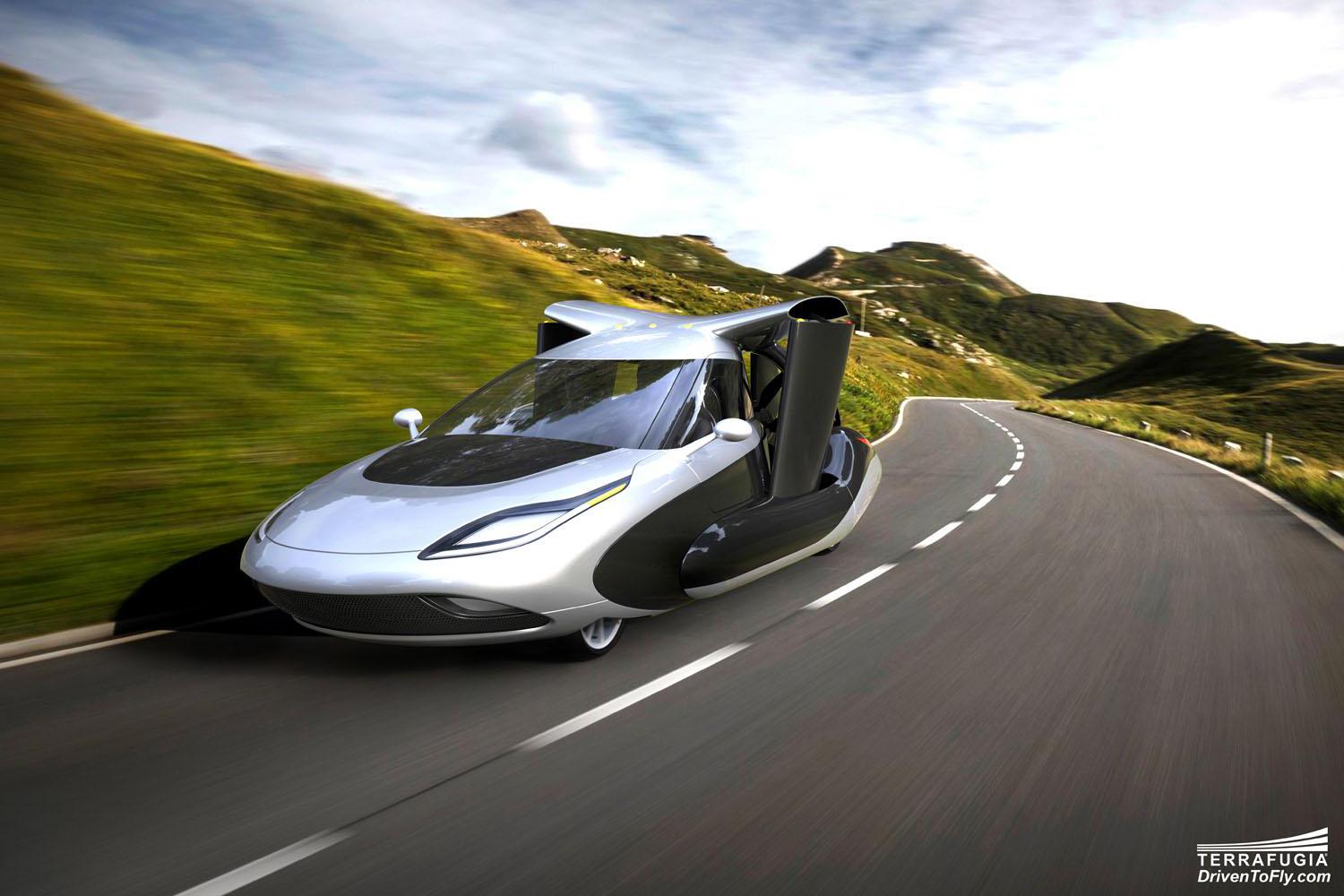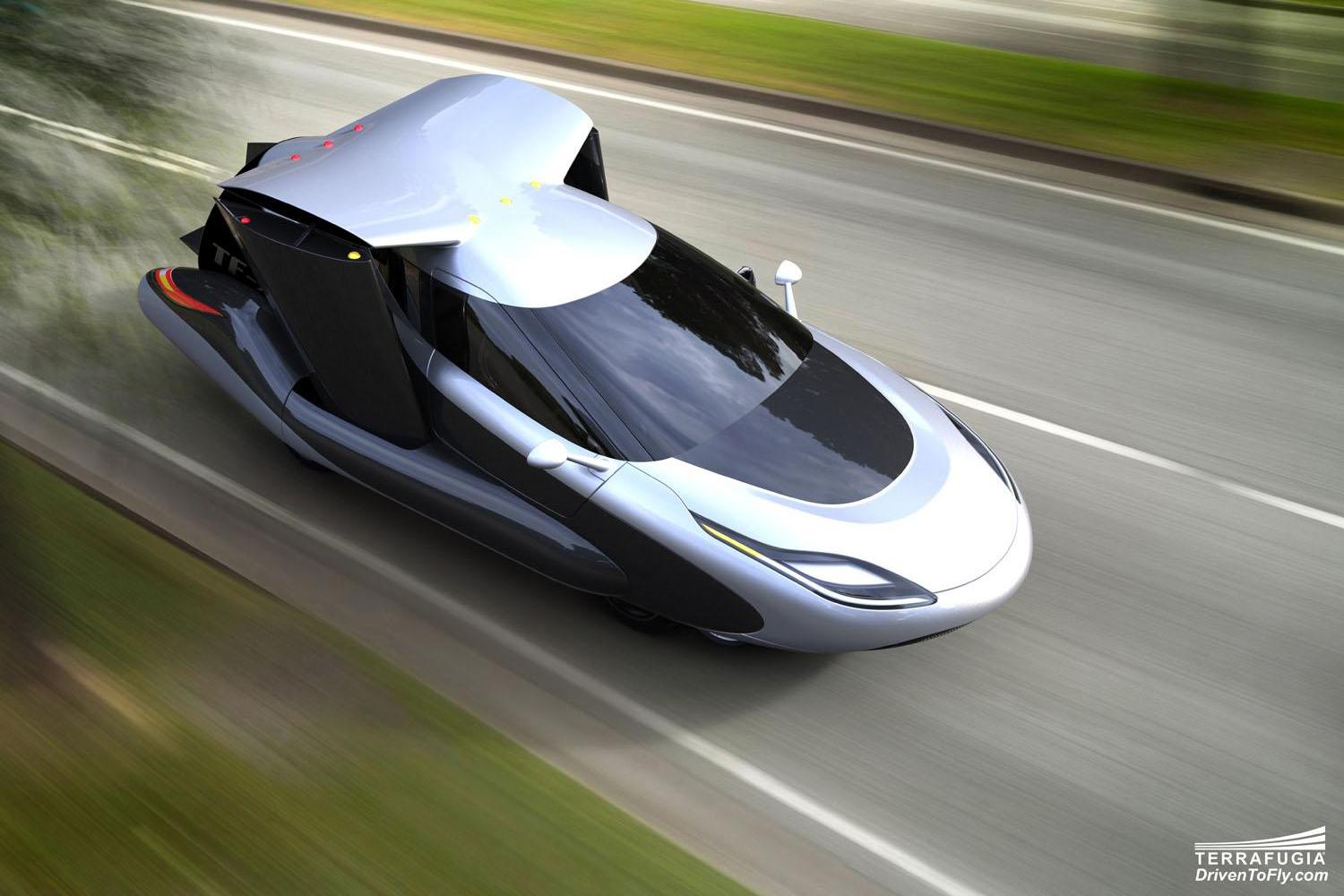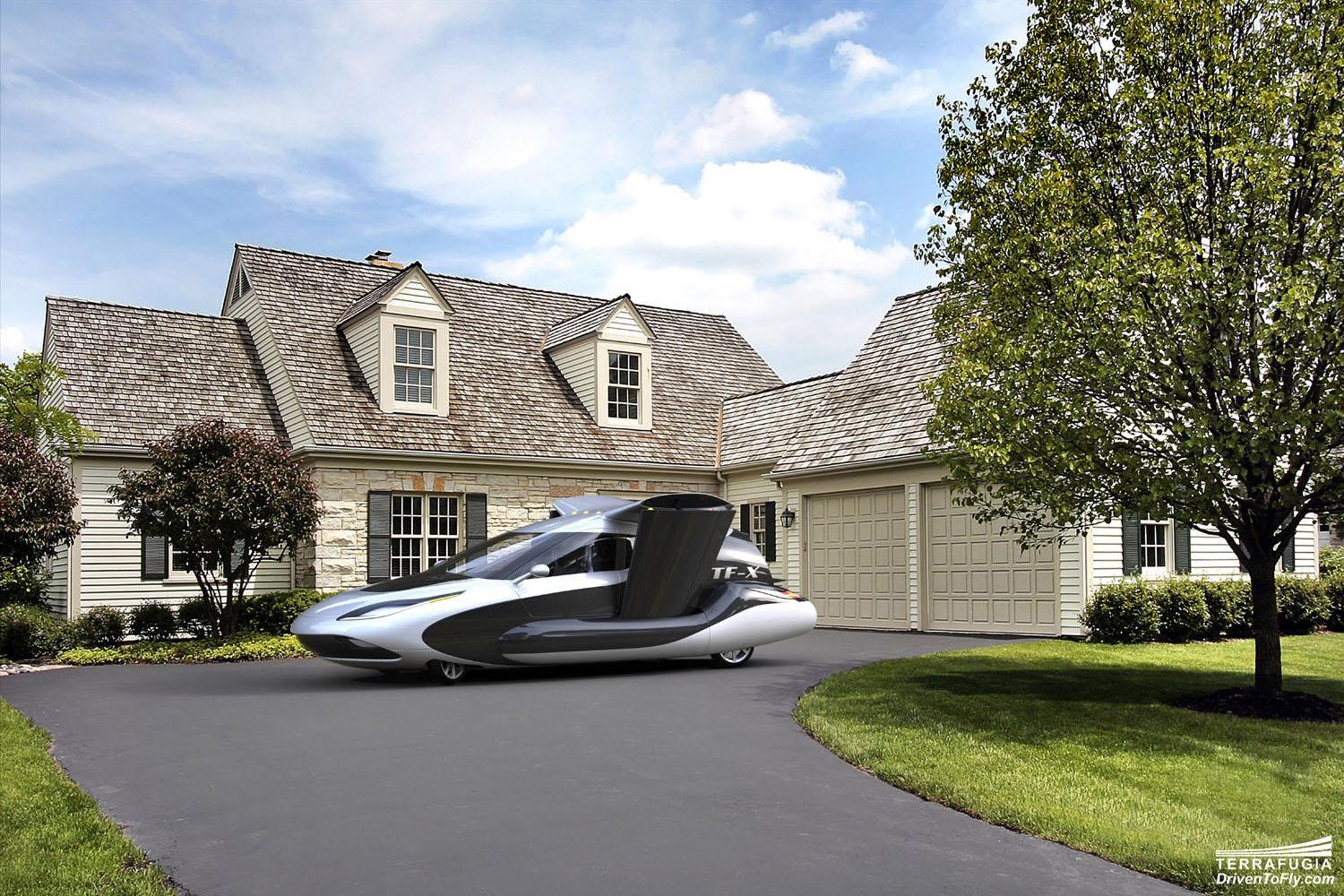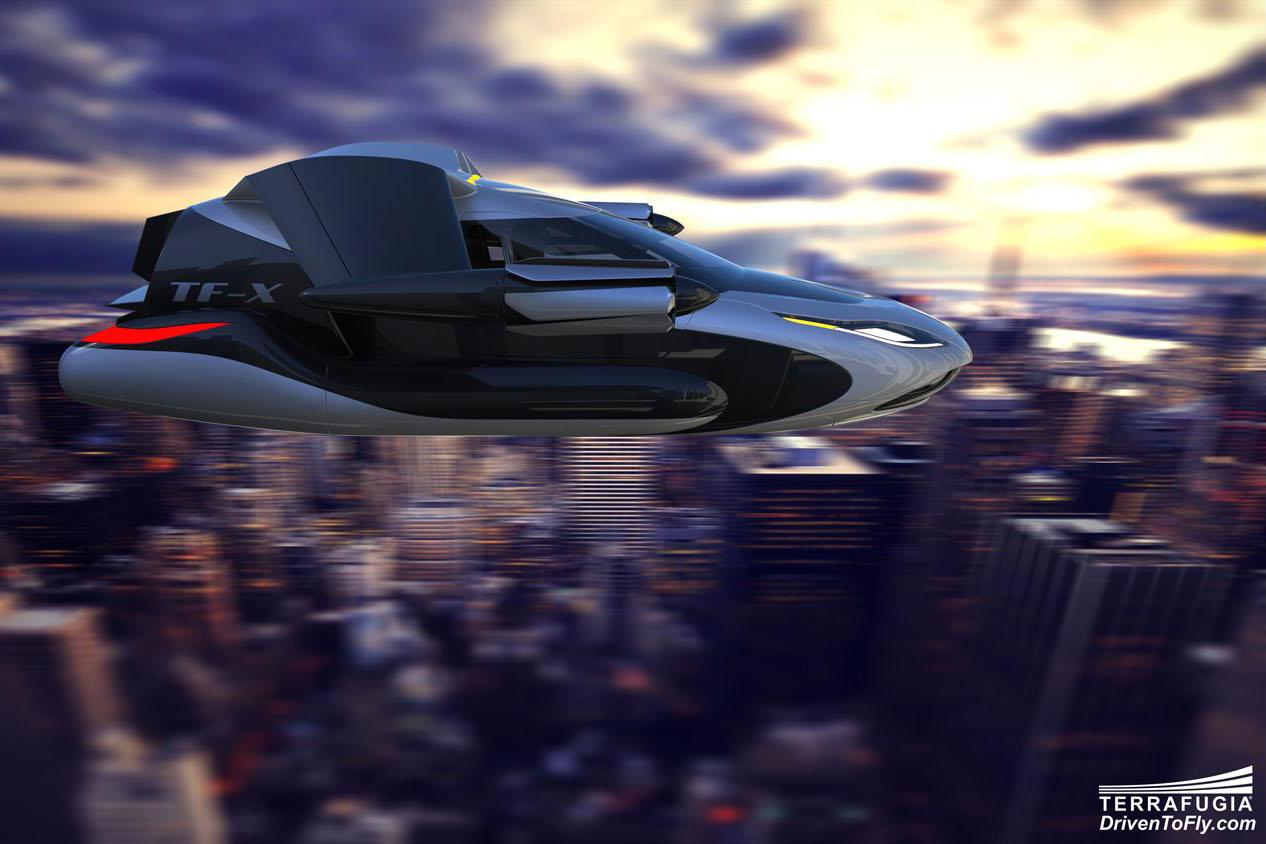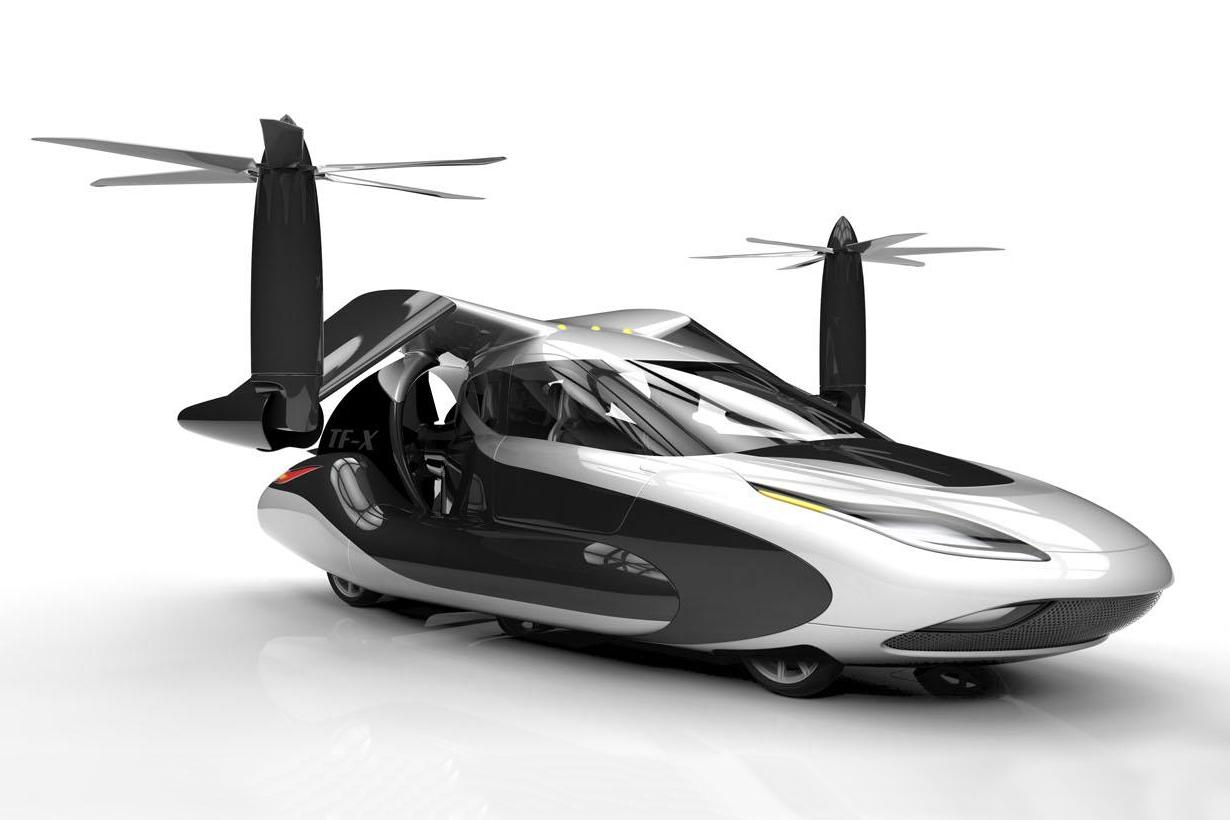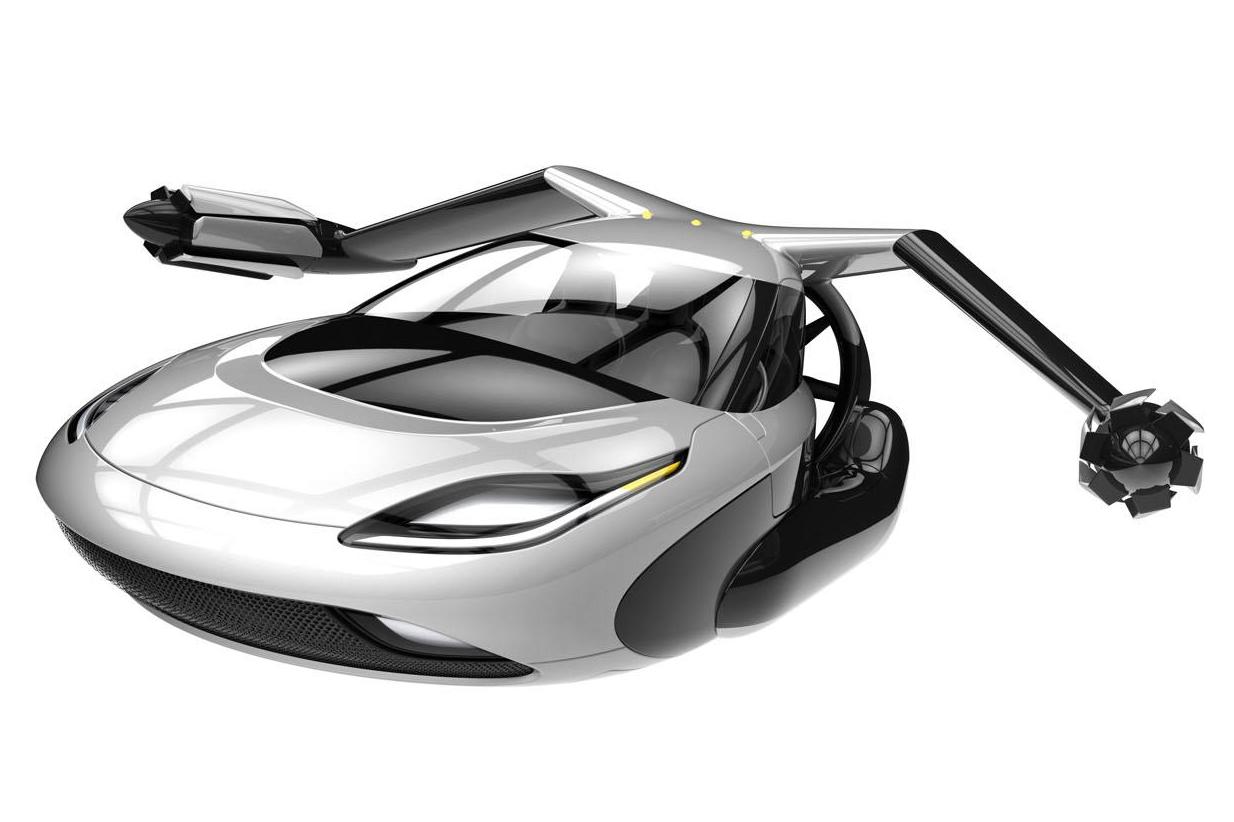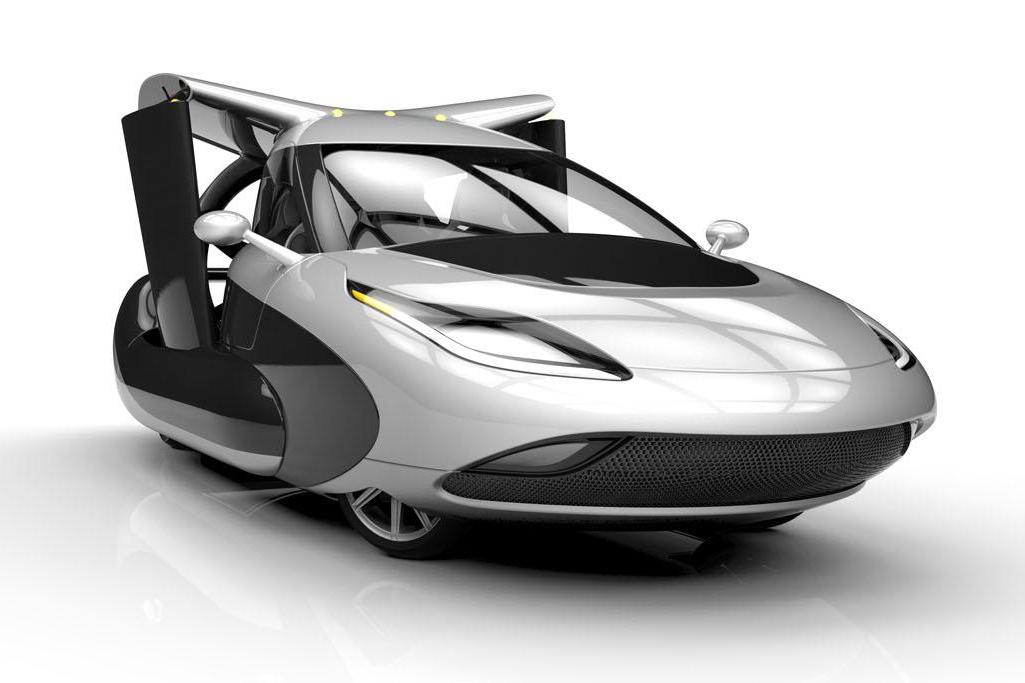Updated 07-22-2015 by Ronan Glon: Added information about the legal issues that the TF-X faces.
With space for up to four adults, the TF-X drives just like a normal plug-in hybrid. The wings are neatly tucked away in a compartment located above the rocker panels so the TF-X can maneuver through city traffic with ease and fit in the average parking spot or garage.
When the driver is ready to become a pilot, the TF-X’s wings deploy at the push of a button in a matter of seconds.
When the driver is ready to become a pilot, the wings deploy at the push of a button in a matter of seconds. Two electric motors linked to a pair of propellers join forces to generate a megawatt of power, a setup that allows the TF-X to take off vertically just like a helicopter, eliminating the need for a runway.
Once the TF-X is in the air, a 300-horsepower gasoline-burning engine kicks in to complement the electric motors and top up the battery pack. Past a certain speed, the propellers fold out of the way and the thrust needed to hurl the TF-X through the air is generated by a large rear-mounted fan.
A life-sized prototype hasn’t been tested yet, but Terrafugia expects the TF-X will be able to cruise at speeds of up to 200 mph for about 500 miles. The pilot can deploy an on-board parachute if anything goes wrong, through the car will be programmed to avoid bad weather, other aircrafts, and tower-controlled airspace.
Terrafugia predicts it will take the average driver about five hours to learn how to fly a TF-X, but would-be pilots who don’t feel fully comfortable in the cockpit can engage an auto-pilot function that allows the car to fly and land itself. The landing procedure is similar to take-off: the electric motor-driven propellers extend and pivot up, and the car decelerates until it is able to land vertically.
On the ground, the wings fold back into their respective compartments and the TF-X can once again be driven like a normal car. The TF-X will be fully street-legal, but regular drivers will only be able to fly in non-tower-controlled air space. Those who wish to travel in regulated zones will need to obtain a special permit.
When we can expect to see the TF-X land — literally and figuratively — is up in the air. Back in 2013, the company suggested its flying car was at least eight years from going on sale, so if that time frame still stands it won’t be available until 2021 at the very earliest. When it enters production, expect the TF-X to cost about the same as a very high-end luxury car.
Bringing the TF-X to the market will be easier said than done, especially considering Terrafugia is a privately held company that largely relies on the benevolence of investors for funding, but the team in charge of the firm has a surprising amount of experience in both building cars that can fly and navigating the legal issues associated with such vehicles.
In 2010, the United States Federal Aviation Authority agreed to exceptionally classify the Transition, the company’s first fully functional model, as a light sport aircraft even though it exceeded the 1,320-pound weight limit by 110 pounds. A year later, the National Highway Traffic Safety Administration (NHTSA) gave the Transition a temporary exemption from several key regulations, allowing it to ride on special tires certified for motorcycles, use windows made out of aircraft-style polycarbonate instead of laminated glass, and go without an electronic stability control (ESC) system.
“The basis for the exemption is that compliance with these requirements would cause substantial economic hardship to a manufacturer that has tried in good faith to comply with the standard,” the NHTSA explained in a statement.
The TF-X will undoubtedly have to clear similar hurdles on its long path from a computer-generated prototype to a production vehicle, but Terrafugia believes that deposits from intrepid early adopters and enthusiastic backing from investors will allow it to become the first company to launch a commercially viable flying car.
